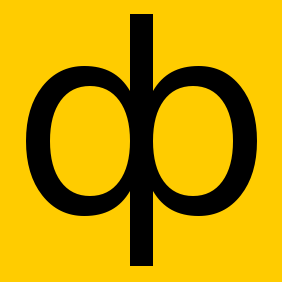Lesson 11: Negation and Conditional
What you’ll learn in this lesson:
- The definition of the negation and conditional operators
- How these operators are used to determine truth value of compound statements
- How conditionals are used to communicate necessary and sufficient conditions of a claim
 In the last lesson, we learned about two operators that we’ll be using to construct statements we’ll use in arguments–the conjunction and disjunction operators. The negation and conditional operators, the final two operators that we’ll learn, each are unique in their own way but they function in much the same way as the first two. They are used to create compound statements and operate on simple sentences (or the truth value of compound statements) to produce a truth value for the compound statement as a whole.
In the last lesson, we learned about two operators that we’ll be using to construct statements we’ll use in arguments–the conjunction and disjunction operators. The negation and conditional operators, the final two operators that we’ll learn, each are unique in their own way but they function in much the same way as the first two. They are used to create compound statements and operate on simple sentences (or the truth value of compound statements) to produce a truth value for the compound statement as a whole.
Note: for each of the operators we’ll learn, the operator can operate on a simple statement or the truth value of a compound statement. In the examples for this lesson, we’ll just use simple statements to make the idea clearer. We’ll talk about how operators work on the truth value of compound statements in the lesson, "Operator of the Largest Scope".
Negation
Negation is an operator that operates on a single simple or compound statement to create a compound statement that "flips" or reverses the truth value of the simple statement. It typically is written as "not" or "it is not the case that."
Negation Rule: In order for the compound statement as a whole to be true, the simple or compound statement it operates on has to be false. In order for the compound statement to be false, the simple statement has to be true.
A Special Case: All operators except negation are called "dyadic" operators. That means that they operate on two or more simple statements. The negation operator is the only "monadic" operator which means it operates on one simple statement.
Symbol: Tilde (~) (Unicode 007E) or hyphen/minus (-) (Unicode: 002D). You can use either symbol for negation and logic textbooks will vary though many logicians prefer the tilde.
Example: For the simple statement, The book is on the shelf, the negation operator is placed in front of the statement and would be stated as It is not the case that the book is on the shelf and could be symbolized as ~B
A table will help illustrate how negation operates on a the truth value of a simple sentence.
| ~ | B |
|---|---|
F |
T |
T |
F |
We use negation all the time in colloquial speech. Someone may make a claim such as "Your wallet in the drawer." and you may respond, "I’m looking in the drawer and it’s not here!" Essentially you’re responding with a negation: "It is not the case that my wallet is in the drawer." The first sentence is made as a true claim and you’re saying it’s actually not true, it’s false.
Conditional
A conditional is a compound statement made up of two or more simple or compound statements, each joined by the conditional operator. In English, the first simple statement is preceded by the word "if" and the second simple statement is preceded by the word "then" (see example below).
Parts of a conditional: As stated above, the conditional is a bit different than other dyadic operators in that we use two words around the simple or compound statements to construct a conditional. The simple or compound statement following the "if" is called the antecedent and the simple or compound statement following the "then" is called the consequent.
Conditional Rule: If the antecedent is true and the consequent is false, the conditional as a whole is false otherwise it’s true.
Symbol: Horseshoe (⊃) (Unicode 2283 superset), greater than (>) (Unicode 003E) or arrow (–>). In this and subsequent lessons, we’ll use the greater than symbol for conditional.
Example: For the two simple statements:
| Statement | Symbol | Truth Value |
|---|---|---|
| The movie is less than two hours long | M | True |
| The novel is better | N | True |
The conditional is written, If the movie is less than two hours long then the novel is better and would be symbolized as M > N. Since both the antecedent and the consequent are true, the conditional as a whole would be true.
The following table represents the truth value of the conditional under each possible truth condition.
| C | > | S |
|---|---|---|
| true | true |
true |
| true | false |
false |
| false | true |
true |
| false | true |
true |
The Puzzling Conditional Rule: Looking at the table above, you may be wondering how a conditional has only one false condition. Intuitively, it seems like the conditional should be true only if both the antecedent and consequent are true. This is an intuition many people share. We explain why the conditional works this way in the lesson, "Truth Function".
More on Conditionals
Before we leave this topic, we need to examine an interesting relationship between the antecedent and consequent of conditionals. If you think about how we use conditionals in everyday conversation, we intend for the antecedent to describe something that could be true. That’s typically what we mean by the word "if." We can understand "if" as meaning "on the condition that" something happens or is true. It might happen or might be true but it might not.
The consequent then tells us what would follow or what also would be true on the condition that the antecedent actually does happen or is true. In logic, we need to understand the would follow as must follow.
Put another way, we can describe the antecedent as describing a condition that is sufficient to bring the consequent about. That is, it doesn’t have to happen but if it does that’s sufficient to bring about the consequent. Philosophers call this a sufficient condition.
Since the consequent must be true (there’s no way it can’t be true if the antecedent is true) then it is true necessarily. Philosophers call this a necessary condition. Here are some examples:
- If I pick a banana, then I will have a piece of fruit
- If I pick an apple, then I will have a piece of fruit
- If I pick a lemon, then I will have a piece of fruit
In each of these cases, picking a banana, apple, or lemon is sufficient for me to have a piece of fruit. But if in fact I do pick one of those items, then it must be true that I have a piece of fruit. Notice too there are other sufficient conditions–I could choose other types of fruit to pick. Also notice that none of the antecedents are necessary for me to have a piece of fruit but any one of them will bring about the consequent.
So why does this matter? If you think carefully about the ideas above, you may see that necessary and sufficient conditions are the essential elements of every definition or true description of something. In other words, a definition is really just a conditional! When we create a definition, the thing we’re defining is the sufficient condition (or antecedent) and the properties that we say the thing must have to be that thing are its necessary condition (or consequent–typically written as bunch of simple statements joined by ‘and’ which we now know is a conjunction). Consider this conditional:
If S is a human then S is . . .
How would you fill in the consequent of that conditional? Does S have to have blonde hair or be under six feet tall or be a female? Most people would say these aren’t necessary conditions for being a human. So what are those necessary properties? If you can fill out the consequent, you have a definition for what it means to be human. Conditionals are very powerful indeed and something we use every day.
Knowledge Check
Test your knowledge of the concepts in this lesson by taking this quiz. This is just an opportunity to evaluate your knowledge and how you’re learning. You can take the quiz as many times as you’d like by refreshing the page. Try to take the entire quiz without hints or showing the answers first. Once you get your score, take the quiz again and show the hints or answers on the questions you missed so you can review the material.
Copyright© Philosophy News






